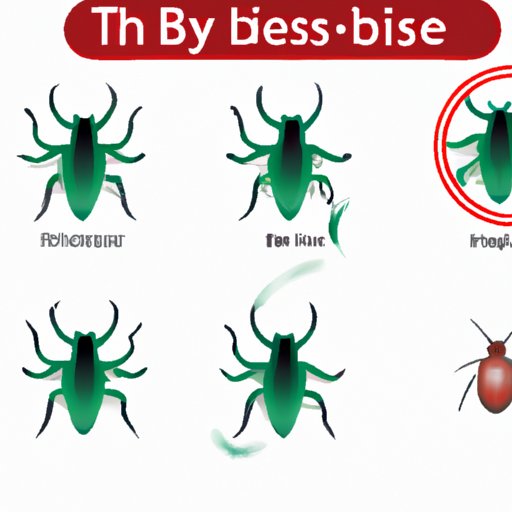
I. Introduction
Lyme disease is a tick-borne illness that affects an estimated 300,000 people in the United States every year. The disease can cause severe symptoms and lead to long-term health complications if not detected and treated early. This article aims to provide a comprehensive overview of where Lyme disease comes from, its history, ecology, symptoms, and prevention.
II. Historical Perspective
Lyme disease was first recognized as a distinct illness in the United States in the early 1970s when a cluster of children in Lyme, Connecticut, began experiencing unusual symptoms, including joint pain and fever. Medical experts initially thought that the patients were suffering from juvenile rheumatoid arthritis or meningitis.
However, research conducted by Dr. Allen Steere and his colleagues at Yale University in the mid-1970s led to the identification of the bacteria responsible for causing Lyme disease, named Borrelia burgdorferi. The bacteria are transmitted to humans through the bites of infected black-legged ticks (Ixodes scapularis) commonly found in the northeastern and midwestern United States.
Since the discovery of the bacteria and its transmission through tick bites, Lyme disease has become a significant concern globally, with cases reported in at least sixty-five countries, including the United States, Europe, Asia, and Australia.
III. Ecological Factors
Ticks that carry Borrelia burgdorferi typically live in high-risk areas that have specific environmental characteristics. These ticks thrive in wooded and grassy areas, often seeking out animals like deer, mice, and birds to feed on. Factors that contribute to tick population explosion include climate change, deforestation, and urbanization.
Climate change has led to warmer weather and increased humidity, which creates the perfect breeding ground for ticks. Deforestation has led to forest fragmentation, which has promoted the spread of ticks and their hosts. Urbanization and suburbanization have led to population growth and the expansion of residential areas into tick-infested woodlands.
IV. The Science Behind Lyme Disease
The bacteria that cause Lyme disease enter the human bloodstream through the bite of an infected tick. These bacteria then spread through the body, triggering an immune system response that can lead to a range of symptoms, including fever, headache, fatigue, and a characteristic skin rash known as erythema migrans.
Testing for Lyme disease involves checking for antibodies produced by the immune system in response to the bacteria. Testing usually involves an initial screening test called the Enzyme-Linked Immunosorbent Assay (ELISA), followed by a confirmatory test called the Western Blot test.
Lyme disease progresses through three stages: early localized, early disseminated, and late disseminated. Early localized symptoms typically occur within weeks following an infected tick bite and include a round, red rash that expands over time. Early disseminated symptoms can occur weeks to months after the bite and include fatigue, chills, fever, headache, and muscle aches. Late-stage disseminated Lyme disease can result in severe health complications affecting the heart, the brain, and the nervous system.
V. The Symptoms of Lyme Disease
The symptoms of Lyme disease can vary widely from person to person. The most common symptom is a round, red rash that appears at the site of the tick bite and expands over time. The rash may be accompanied by flu-like symptoms such as fever, headache, and muscle pain. Other symptoms may include joint pain, fatigue, and problems with vision or hearing.
Although symptoms of Lyme disease can be severe, some people may not experience any symptoms at all initially. Left untreated, Lyme disease can lead to severe health complications, including meningitis, heart palpitations, and chronic joint pain.
VI. Preventing Lyme Disease
Prevention is the best way to avoid contracting Lyme disease. Some ways to prevent Lyme disease include:
- Wearing protective clothing, such as long sleeves and pants, when spending time outdoors in tick-infested areas.
- Using insect repellents that contain DEET or other EPA-approved active ingredients.
- Performing regular tick checks after spending time outdoors, paying close attention to the groin, armpits, and scalp.
- Showering and washing clothes after spending time outdoors to wash off any ticks that may be lingering on your body or clothing.
If you live in a high-risk area, consider taking additional measures to prevent tick bites, such as creating a tick-safe zone around your home by clearing tall grass and brush and using tick-control products such as acaricides. You can also consider vaccinating your pets against Lyme disease to avoid bringing infected ticks into your home.
VII. Conclusion
Lyme disease is a serious illness that can cause long-term health complications. However, with the proper knowledge and care, it is a preventable disease. Understanding the history, ecology, symptoms, and prevention of Lyme disease is crucial in reducing the disease’s incidence and severity. Be sure to take the necessary measures to protect yourself and your family, such as wearing protective clothing, using insect repellents, and performing regular tick checks.
Remember, if you suspect that you may have been bitten by an infected tick or are experiencing any of the symptoms of Lyme disease, seek medical attention immediately.





